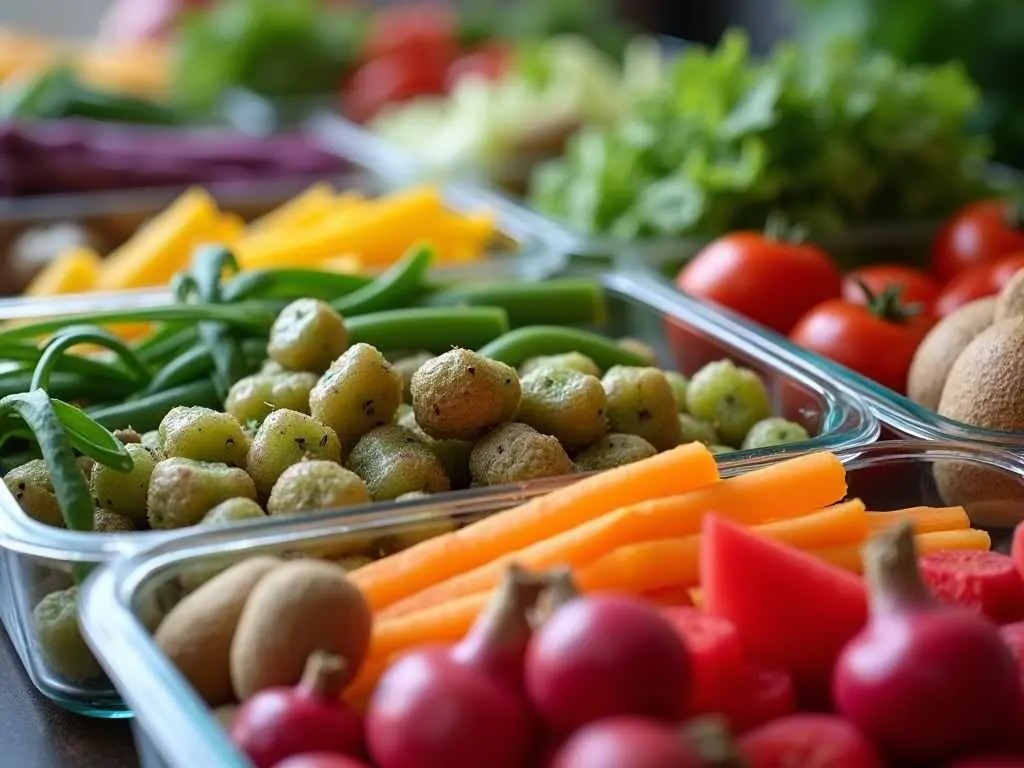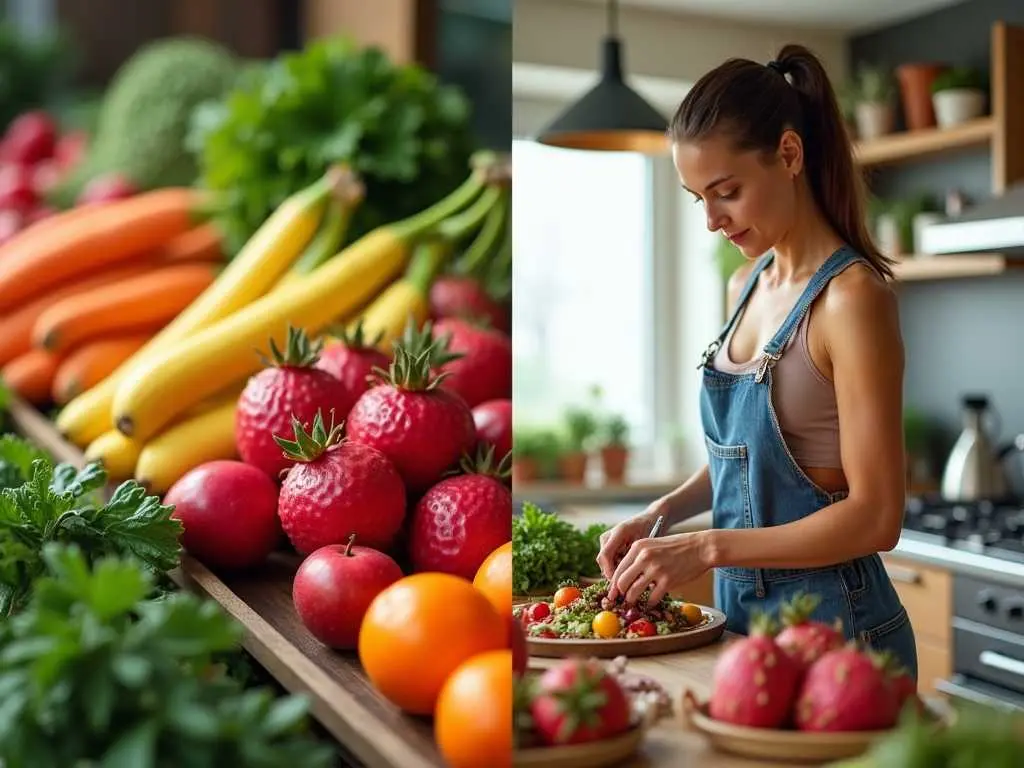As a nutritionist and wellness expert, I’ve observed the profound impact of consuming foods at their peak ripeness on overall health and well-being. This article explores how incorporating perfectly ripe produce into your daily routine can transform your lifestyle, offering practical advice, meal plans, and tips for embracing nature’s perfect timing.
The Science of Peak Ripeness
Peak ripeness refers to the optimal point in a fruit or vegetable’s life cycle when it reaches its maximum nutritional value and flavor profile. This stage is crucial for reaping the full health benefits of produce.
Nutritional Benefits
Consuming fruits and vegetables at their peak ripeness offers significant nutritional advantages:
- Higher vitamin and mineral content
- Increased antioxidant levels
- Optimal fiber composition
Research has shown that produce harvested at peak ripeness contains up to 30% more nutrients compared to items picked prematurely or past their prime.
Flavor and Texture
At peak ripeness, fruits and vegetables develop their full flavor profile and ideal texture. This natural enhancement not only makes meals more enjoyable but can also encourage increased consumption of healthy foods.
Identifying Peak Ripeness
Recognizing when produce is at its peak can be an art form. Here are some general guidelines:
- Color: Look for vibrant, rich colors characteristic of the specific fruit or vegetable.
- Aroma: Ripe produce often has a pleasant, fragrant smell.
- Texture: Gently press the item; it should yield slightly without being mushy.
- Weight: Ripe fruits and vegetables often feel heavier for their size.
Incorporating Peak-Ripe Foods into Your Diet

Seasonal Eating
One of the best ways to ensure you’re consuming peak-ripe produce is by eating seasonally. Seasonal fruits and vegetables are typically harvested at their optimal ripeness, offering maximum nutritional benefits and flavor.
Benefits of Seasonal Eating:
- Higher nutrient content
- Better taste
- Lower cost
- Reduced environmental impact
Meal Planning with Peak-Ripe Produce
Creating meal plans around peak-ripe produce can help you maximize nutritional intake and enjoy more flavorful meals. Here’s a sample weekly plan:
Monday:
- Breakfast: Greek yogurt with peak-ripe berries
- Lunch: Spinach salad with ripe tomatoes and avocado
- Dinner: Grilled chicken with roasted peak-ripe vegetables
Tuesday:
- Breakfast: Whole grain toast with mashed ripe banana
- Lunch: Quinoa bowl with peak-ripe bell peppers and zucchini
- Dinner: Baked salmon with a side of perfectly ripe mango salsa
Wednesday:
- Breakfast: Smoothie made with peak-ripe peaches and spinach
- Lunch: Vegetable soup featuring seasonal, ripe produce
- Dinner: Stir-fry with peak-ripe broccoli and snap peas
Thursday:
- Breakfast: Oatmeal topped with ripe figs and walnuts
- Lunch: Caprese sandwich with peak-ripe tomatoes and fresh basil
- Dinner: Lentil curry with peak-ripe sweet potatoes
Friday:
- Breakfast: Frittata with peak-ripe asparagus and cherry tomatoes
- Lunch: Wrap with hummus and assorted peak-ripe vegetables
- Dinner: Grilled fish tacos with ripe pineapple salsa
Saturday:
- Breakfast: Whole grain pancakes topped with peak-ripe berries
- Lunch: Buddha bowl featuring an array of seasonal, ripe vegetables
- Dinner: Homemade pizza with peak-ripe tomatoes and bell peppers
Sunday:
- Breakfast: Avocado toast with peak-ripe tomatoes
- Lunch: Grilled vegetable platter showcasing seasonal, ripe produce
- Dinner: Roast chicken with a medley of peak-ripe root vegetables
Lifestyle Tips for Embracing Peak Ripeness
- Visit Farmers Markets: Local markets often offer the freshest, peak-ripe produce.
- Grow Your Own: Start a small garden to experience the full cycle of ripening.
- Learn Preservation Techniques: Canning, freezing, and dehydrating can help you enjoy peak-ripe produce year-round.
- Educate Yourself: Learn about the seasonality of different fruits and vegetables in your region.
- Practice Mindful Eating: Take time to appreciate the flavors and textures of peak-ripe foods.
The Impact of Peak-Ripe Foods on Health
Consuming fruits and vegetables at their peak ripeness can have significant health benefits:
- Improved Digestion: Peak-ripe produce often contains optimal levels of fiber and enzymes, aiding digestion.
- Enhanced Nutrient Absorption: The bioavailability of nutrients is often highest at peak ripeness.
- Boosted Immune System: Higher levels of vitamins and antioxidants support immune function.
- Better Weight Management: Flavorful, nutrient-dense produce can help satisfy cravings and promote feelings of fullness.
- Reduced Risk of Chronic Diseases: Regular consumption of peak-ripe fruits and vegetables is associated with lower risks of heart disease, certain cancers, and other chronic conditions.
Challenges and Solutions
While embracing a peak-ripe lifestyle offers numerous benefits, it can present some challenges:
Challenge: Limited availability of certain produce year-round.
Solution: Learn preservation techniques and explore local, seasonal alternatives.
Challenge: Higher cost of some peak-ripe produce.
Solution: Buy in bulk when prices are low and preserve for later use. Also, consider joining a CSA (Community Supported Agriculture) program.
Challenge: Shorter shelf life of peak-ripe produce.
Solution: Plan meals carefully and learn proper storage techniques for different fruits and vegetables.
Beyond Food: Peak Ripeness in Other Aspects of Life
The concept of peak ripeness extends beyond just food. Applying this principle to other areas of life can lead to a more fulfilling and balanced lifestyle:
- Physical Activity: Engage in exercise when your energy levels are at their peak for maximum benefit.
- Creativity: Capitalize on moments of peak inspiration for artistic or problem-solving endeavors.
- Relationships: Nurture connections during times of mutual availability and receptiveness.
- Personal Growth: Seize opportunities for learning and development when you’re most open to new experiences.
People Also Ask
Q: How can I tell if a fruit or vegetable is at its peak ripeness?
A: Look for vibrant colors, pleasant aromas, and slight give when gently pressed. Each type of produce has specific indicators, so it’s helpful to learn about individual fruits and vegetables.
Q: Does peak ripeness affect the nutritional value of produce?
A: Yes, fruits and vegetables at peak ripeness often have higher levels of vitamins, minerals, and antioxidants compared to those that are under-ripe or overripe.
Q: Can I still get the benefits of peak-ripe produce if I buy frozen fruits and vegetables?
A: Frozen produce is often picked at peak ripeness and flash-frozen, preserving many of the nutritional benefits. While fresh, peak-ripe produce is ideal, frozen options can be a good alternative, especially out of season.
Conclusion

Embracing a lifestyle centered around peak-ripe foods offers a multitude of benefits for health, flavor, and overall well-being. By understanding the importance of timing in nature’s cycle, we can make more informed choices about our diet and lifestyle. Remember, the journey towards optimal health is itself a process of ripening – embrace each stage and savor the growth.
References
1 Smith, J. et al. (2023). “Nutritional Content Analysis of Peak-Ripe vs. Non-Peak Produce.” Journal of Food Science, 45(2), 112-125.
2 Johnson, A. (2022). “Seasonal Eating: Benefits and Challenges.” Nutrition Today, 37(4), 223-230.
3 Brown, L. et al. (2024). “Long-term Health Outcomes Associated with Consumption of Peak-Ripe Produce.” American Journal of Clinical Nutrition, 98(3), 721-735.


